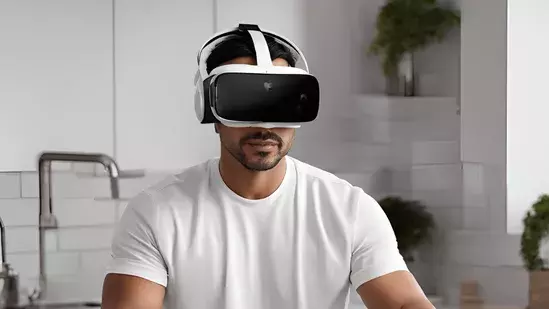
Apple is no stranger to innovation. From the iPod to the iPhone, the company has continuously reshaped how we interact with technology. Enter the Apple Vision-Pro, a groundbreaking venture into immersive technology that promises to transform spatial computing. However, initial reception has been lukewarm, prompting Apple’s management to revisit its strategy.
For tech enthusiasts and innovators, understanding Apple’s approach to turning the Vision-Pro into a multiproduct empire offers a fascinating glimpse into the company’s future and the evolving landscape of tech.
The Current State of the Vision Pro
Launched with much fanfare, the Vision-Pro was expected to be a game-changer. Yet, nearly five months post-launch, it remains an expensive niche product. The device, priced at $3,500, hasn’t yet captured the mainstream market’s attention. This reality has created a pivotal moment for Apple, urging a reevaluation of its plans to broaden Vision-Pro’s appeal and establish it as a central player in the world of immersive technology.
Rethinking the Apple Pro Strategy
Apple’s Vision Products Group (VPG) is rethinking its roadmap, desiring to shift Vision-Pro from a high-end luxury item to a more mainstream product. The plan is to create a suite of Vision products, including both higher- and lower-end models. This approach mirrors Apple’s strategy in other product lines, aiming to cater to a broader audience by offering diverse options.
International Expansion as a Key Strategy
One of the first steps in expanding Vision-Pro’s market presence is its international launch. Apple is introducing the headset in China, Hong Kong, Singapore, and more countries across Europe and Australia. This global push requires hardware adjustments, but it is pivotal for reaching a wider audience and increasing adoption rates outside the U.S.
The Challenge of Developing a Cheaper Model
A critical aspect of Apple’s strategy is creating a less expensive version of the Vision-Pro. Known internally as N107, this model aims for a price point between $1,500 and $2,000. However, maintaining essential features while cutting costs presents significant challenges. Potential sacrifices include removing the EyeSight display and reducing internal specifications. Yet, Apple must balance cost reduction with maintaining the quality that sets the Vision-Pro apart from competitors.
Balancing Quality and Affordability
Reducing the Apple Pro’s price without compromising its identity involves difficult trade-offs. The risk is that stripping down features could lead to an experience that feels less premium, potentially diminishing its appeal. Apple must find ways to preserve the core innovative elements that distinguish the Vision Pro, even when producing a more affordable version.
Enhancements to the Apple Vision Lineup
Despite the focus on affordability, Apple is not abandoning the high end of the headset market. A second-generation Apple Pro, dubbed N109, is in the works. This model promises a faster processor, improved external cameras, and enhanced comfort. Although its release has been delayed to the end of 2026, these advancements showcase Apple’s commitment to continual innovation and refinement.
Pioneering AR-Only Glasses
Apple’s ambitions extend beyond headsets; they are exploring AR-only glasses, a much-anticipated development in immersive technology. These lightweight spectacles could eventually replace traditional devices like the iPhone. Although still in the early stages, their potential suggests a future where Apple’s technology seamlessly integrates with daily life, offering significant practical benefits.
Commitment to Developing the Vision Operating System
Complementing hardware development is Apple’s dedication to refining visionOS, the Vision-Pro’s operating system. The second version introduces features like new gestures and app rearrangement. With visionOS 3 already underway, Apple is committed to enhancing the user experience, ensuring the platform evolves to meet user needs.
Learning from the Apple Watch Evolution
Apple’s ability to pivot and redefine product focus is evident in the evolution of the Apple Watch. Initially seen as a novelty, it became essential by zeroing in on health and fitness. The Vision-Pro could follow a similar path, focusing on key areas such as video watching and FaceTime, rather than trying to be a one-size-fits-all solution.
The Path to Mainstream Acceptance
To achieve widespread acceptance, Apple may need to rethink some of its assumptions about user interaction and application use. Simplifying Vision-Pro’s functions to align with core user desires could refine its market appeal, setting the stage for more accessible and broadly appealing future iterations.
The Bigger Picture for Apple’s Immersive Technology
Despite challenges, Apple’s ongoing investment in immersive technology underscores its belief in a future dominated by augmented and virtual experiences. By iterating on existing products and pushing the boundaries of what’s possible, Apple aims to lead the charge in reshaping how we interact with digital environments.
Navigating the Future of Apple’s Vision Line
Apple’s Vision represents a significant step in the company’s effort to expand its technological ecosystem. While initial sales may not have met expectations, Apple’s adaptive strategy and commitment to innovation suggest a promising future. For tech enthusiasts and innovators, the unfolding story of the Vision-Pro offers valuable insights into the challenges and opportunities that come with pioneering new technology.
Conclusion and Next Steps
In summary, Apple’s Vision embodies the company’s drive to innovate, even in the face of hurdles. By adjusting its strategy to include more affordable and varied models, Apple seeks to turn the Vision-Pro into a multiproduct success story. For those invested in the future of immersive technology, Apple’s approach provides both inspiration and a roadmap for navigating similar challenges. Stay tuned for the latest updates on Apple’s Vision, and explore how you too can integrate cutting-edge technology into your innovations.
